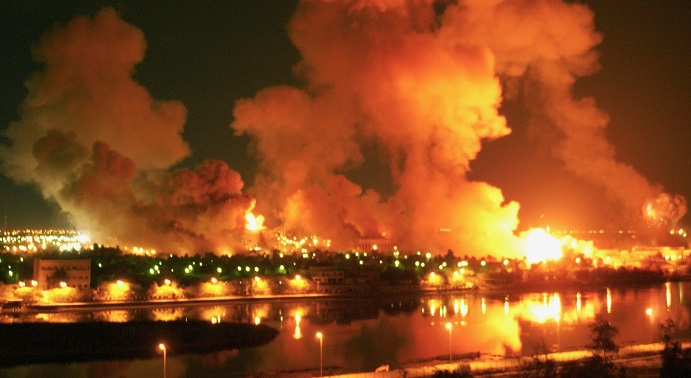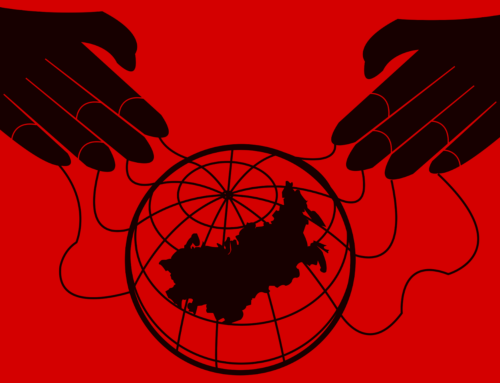Originally published March 20, 2013
I was in the 8th grade, riding back from an oboe lesson, when President Bush crackled on the radio and declared the start of Operation Iraqi Freedom. I wasn’t sure why we were going to war. I didn’t know the first thing about Iraq and I certainly couldn’t find it on a map.
Over the next few days, I caught daily glimpses of the CNN feed over Baghdad, after lunch and before Algebra. American airpower made for beautiful pyrotechnics; I remember hoping those buildings were deserted. The campaign from the air was followed by a brilliant campaign of maneuver – Saddam Hussein’s army crumpled in five weeks.
Iraqi Freedom wasn’t really over, of course. By late high school – 05-07 – American servicemen were dying at a rate far exceeding those initial few weeks of invasion. In that period, I discovered politics and became a leftie, using Iraq as a catalyst. I wrote my first op ed about the horrors of the war, citing white phosphorus, American imperialism, and Bush the war criminal. It all seemed very straightforward: black and white, right and wrong.

The feeling didn’t last. Over my time at Penn – 07-11 – I learned that there are two sides to every story. Although Americans continued to lose limbs and lives, it was getting harder to figure who to blame. I was couched in Waltz and Mearsheimer; neorealism and deterrence; the rationality of actors and logic of preemption. Iraq became a jumbled and confused mess – in my head as in real life – even as the war finally drew to bitter close.
However, even as I lost my stomach for the geopolitics, I became increasingly attuned to Iraq’s very real human cost. In late 2011, I profiled Capt. Josh Byers, an Army officer killed when an IED exploded beneath his vehicle. His last words – “Keep moving forward!” – are credited with saving the men of his company. To hear Capt. Byers’ parents speak, Iraqi Freedom wasn’t a political quagmire or challenging academic exercise. It was the thing that absolutely and decisively, permanently and unquestionably changed the course of their lives. Nothing mattered more than that.
The same is equally true of the parents, relatives, spouses, friends, and dependents of the other 4,487 American servicemen who died in Iraqi Freedom; the 3,418 contractors; the 318 coalition members; the 500,000 Americans who have been forever physically or mentally maimed.
As to the nearly 140,000 Iraqi civilians killed in the violence unleashed by Iraqi freedom; the millions more injured or displaced? To me, that human cost is still unfathomable. I don’t know what it’s like to weather an invasion, suffer a civil war, or lose the country you call home. I can’t imagine it and I never want to find out.
My point, though, is simple. The causes, justifications, and rationales for Iraqi Freedom have shifted through the years, just as surely as I’ve gotten older. The only constants have been the results, and the only way to describe those is with terms like calamity.
I wrote this because, on the tenth anniversary of my ride home from oboe lessons, I thought I might get some better answers. I spent the day slogging through a combination of limp half-apologies and counter-factual rants, penned by a who’s who of Iraqi Freedom’s architects. I attended a 10-year “retrospective” at a neoconservative think tank, during which the moderator deliberately steered conversation clear of Iraq itself. I don’t feel like I learned anything so much as I watched a long, drawn out game of policy hot-potato.
The problem is that Iraq wasn’t just bad policy; it killed tens of thousands of people my age or younger. Today, most of Iraqi Freedom’s architects dropped off to sleep in a 20-mile radius around Washington, DC, where many still look forward to rejoining the government in 2016 or 2020.
Meanwhile, Iraqi Freedom’s casualties are dead and gone. They lost their lives to a series of stupid decisions. And, ten years on, those decisionmakers still don’t have the balls to talk about what they did wrong.





[…] follow the news that closely, but even then I got the sense that my government was making some very strange decisions. Believe it or not, it was a comedy show—it was Stewart—who first shined sustained light on the […]